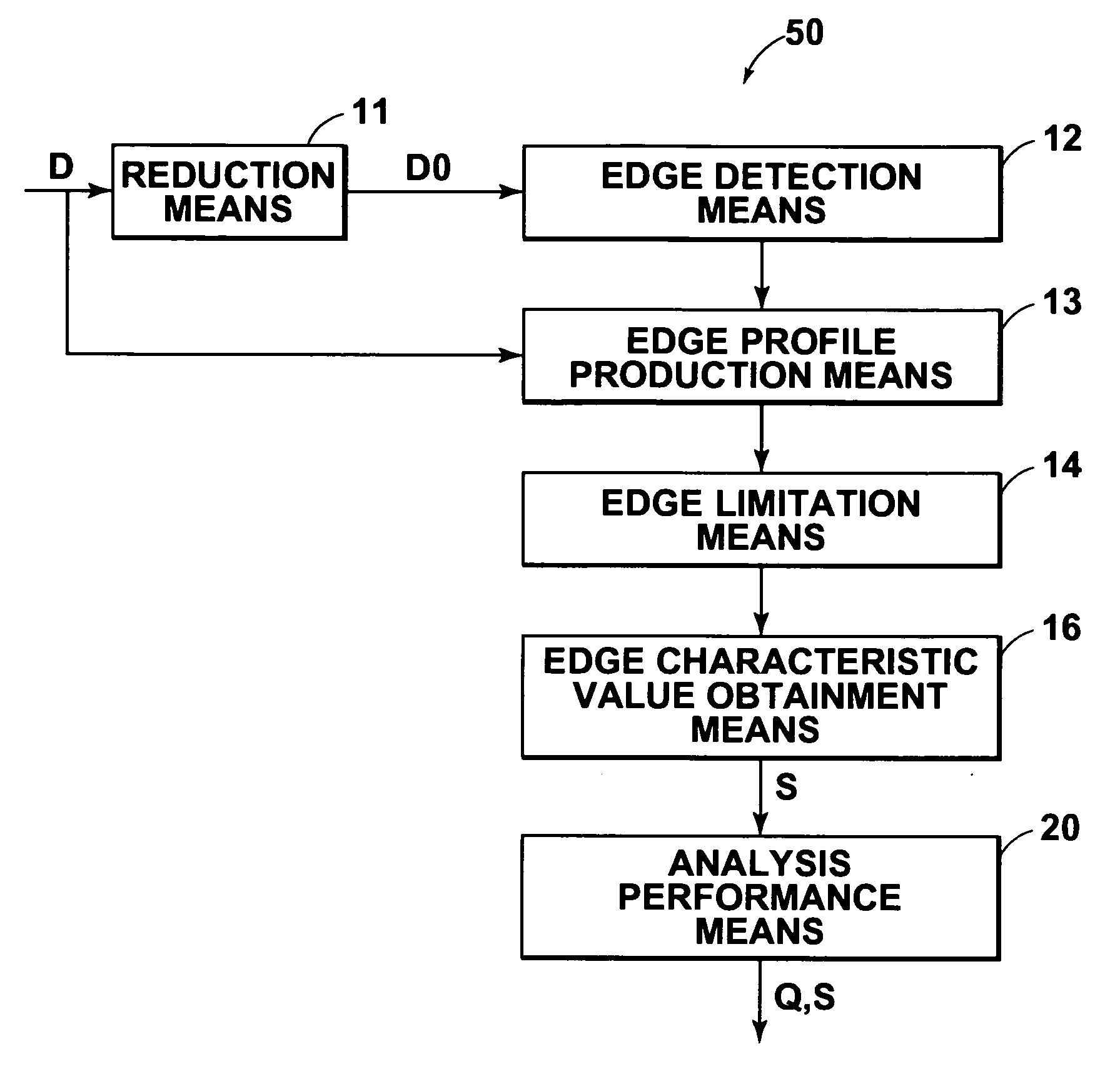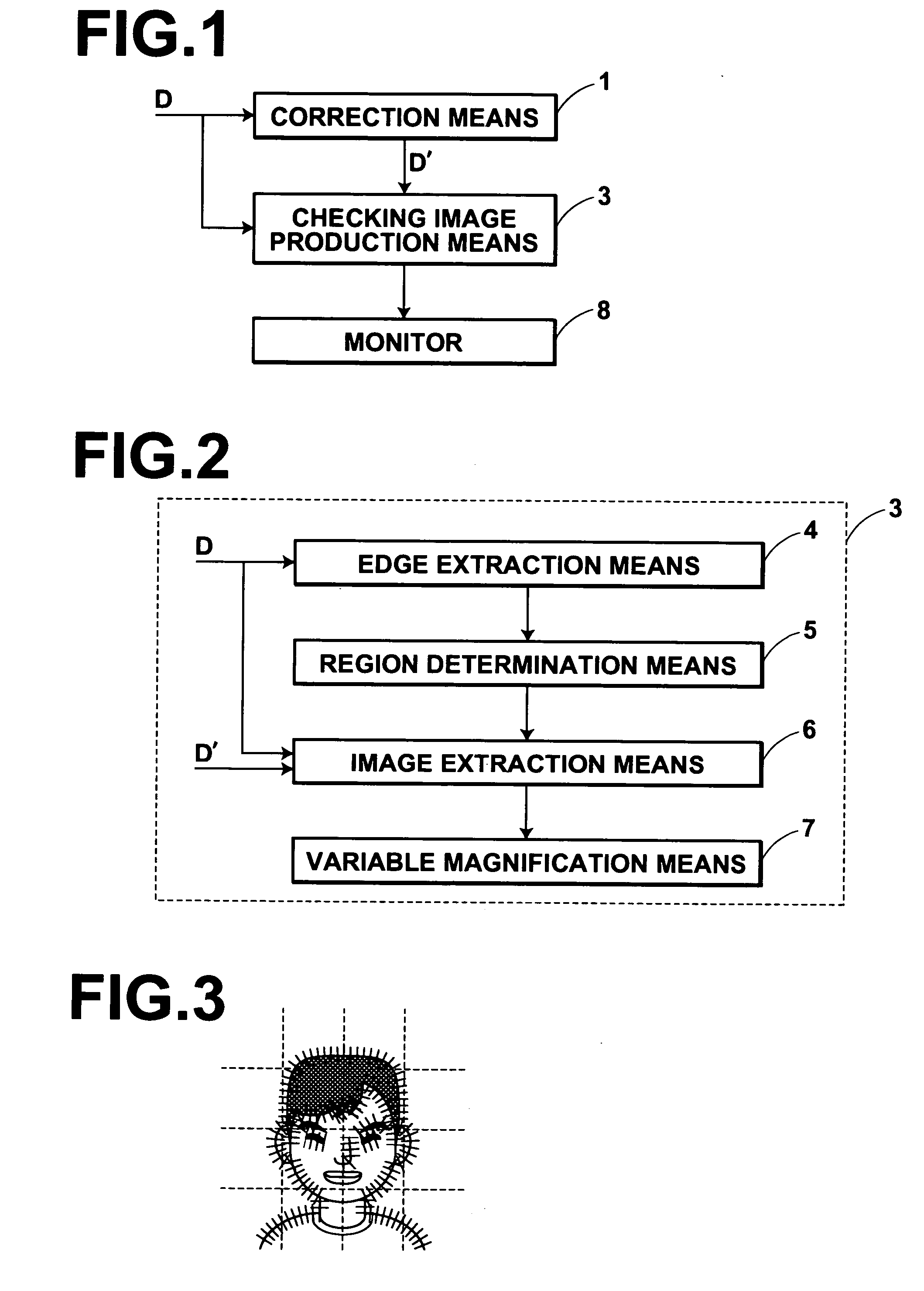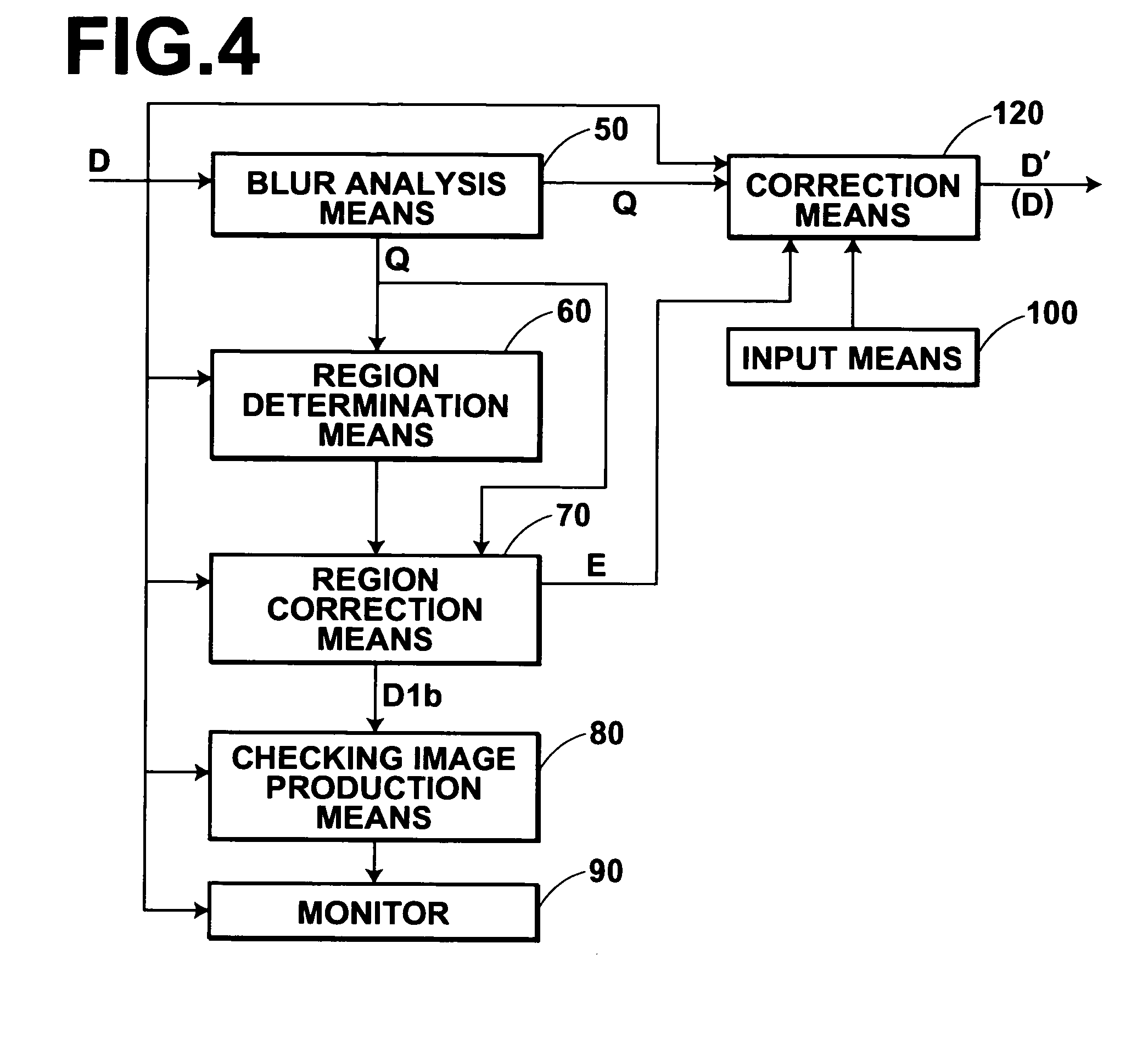Image processing method, apparatus, and program
a processing method and image technology, applied in the field of image processing, can solve the problems of not being able to hold the cellular phone during photography, the shutter speed of the cellular camera is slower than that of the ordinary digital camera, and the image may become fuzzy, etc., to achieve the effect of efficient checking the effect of blur correction processing
- Summary
- Abstract
- Description
- Claims
- Application Information
AI Technical Summary
Benefits of technology
Problems solved by technology
Method used
Image
Examples
first embodiment
[0069]FIG. 1 is a block diagram illustrating the configuration of an image processing apparatus in the present invention. The image processing apparatus according to the present embodiment performs blur correction processing on digital photograph images (hereinafter referred to as images, for short). The image processing apparatus also makes users check the effects of blur correction processing. As illustrated in FIG. 1, the image processing apparatus includes a correction means 1 for obtaining a corrected image D′ by performing blur correction processing on an image D which has been input. The image processing apparatus also includes a checking image production means 3 for producing a checking image using the corrected image D′ and the image D. The checking image is an image for checking the effects of blur correction processing performed by the correction means 1. The image processing apparatus also includes a monitor 8 for displaying the checking image produced by the checking im...
second embodiment
[0075]FIG. 4 is a block diagram illustrating the configuration of an image processing apparatus in the present invention. As illustrated in FIG. 4, the image processing apparatus according to the present embodiment includes a blur analysis means 50 for analyzing the condition of blurs in the input image D. The image processing apparatus also includes a region determination means 60. The region determination means 60 determines a region (hereinafter referred to as an object region) which is an object of correction processing which will be performed by a region correction means 70, which will be described later. The image processing apparatus also includes the region correction means 70 for obtaining a corrected image D1b by performing blur correction processing on an image of the object region in the image D, determined by the region determination means 60. The image processing apparatus also includes a checking image production means 80. The checking image production means 80 extrac...
PUM
 Login to View More
Login to View More Abstract
Description
Claims
Application Information
 Login to View More
Login to View More - R&D
- Intellectual Property
- Life Sciences
- Materials
- Tech Scout
- Unparalleled Data Quality
- Higher Quality Content
- 60% Fewer Hallucinations
Browse by: Latest US Patents, China's latest patents, Technical Efficacy Thesaurus, Application Domain, Technology Topic, Popular Technical Reports.
© 2025 PatSnap. All rights reserved.Legal|Privacy policy|Modern Slavery Act Transparency Statement|Sitemap|About US| Contact US: help@patsnap.com



